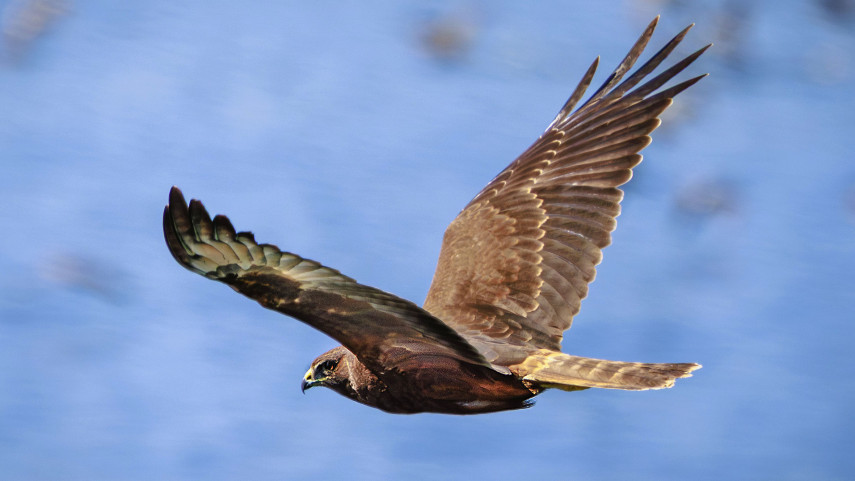
Wildlife on the move as seasons change

Share this story
With the turning of the seasons, wildlife migrations in Christchurch are underway.
The Godwits departed in March for their annual migration to Alaska and other local waterbirds migrated to Australia and the North Island.
Land birds are on the move too, with Fantails appearing across the city as autumn weather arrives. Bellbirds, Grey Warblers, and Finches can also be spotted in greater numbers over the cooler months.
One bird not often thought of as migratory is the familiar Harrier Hawk, officially known as Swamp Harrier/ kāhu.
Andrew Crossland, Christchurch City Council Parks Ecologist says many harriers move to lowland and coastal areas in autumn and winter, and sizeable numbers travel northward through Christchurch.
“It’s at this time we see ‘out-of-place’ harriers flying northwards across Christchurch suburbs or feeding on carrion on country roads. They can be slow to react when a car approaches and will often be young birds, alone and only a few months old.”
They are easily identified by a white patch of feathers on the backs of their heads, Mr Crossland says.
While ornithologists still debate whether this is a bona fide migration or just a post-breeding dispersal, he says birds observed flying north along the northern Canterbury and Marlborough coasts and others seen crossing Cook Strait support the migration theory.
"Council Park Rangers have over many years documented harrier numbers doubling along Kaitorete Spit and around the Avon-Heathcote Estuary/Ihutai , with a dominant autumn northward movement of harriers over Gebbies Pass, along the summit of the Port Hills and northwards along the city dunes and coastal wetlands," says Mr Crossland.
Some of these hawks may stop for a while and congregate together at a favoured feeding area or come together at dusk to spend the night at communal night roosts comprising upwards of 20 birds.
“Only a few local roosts are known – at Travis Wetland, the Bromley Oxidation Ponds and at locations around Lake Ellesmere,” says Mr Crossland.
"Protection measures are in place to ensure continued use of these night roosts, including predator control and provision of suitable vegetation. We would appreciate hearing from members of the public who may know of additional roosts on Council park and reserve land so these sites can also be protected."
Get in touch by emailing Parks.Biodiversity@ccc.govt.nz.
